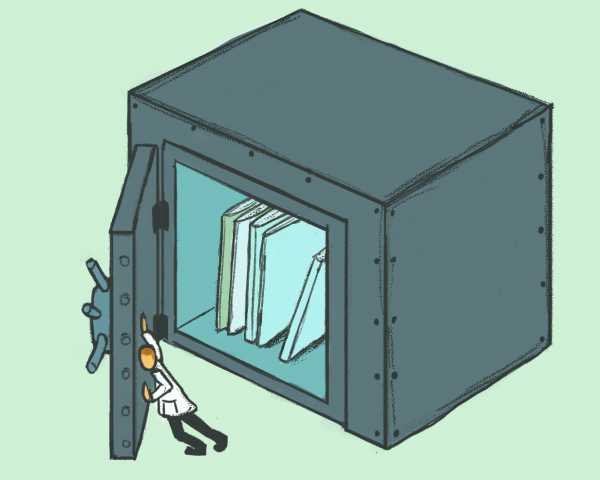
The University of California, the largest public academic system in the US, is ending its subscription to Elsevier, the world’s biggest and most influential publisher of academic research.
This might seem like an odd move for a university — denying its students access to journals and academic papers they need for homework and research. But the move is driven by principle: The University of California doesn’t want its scientific knowledge locked up behind paywalls, and thinks the costs of academic publishing have grown out of control.
The break came, as Stat News reports, after months of failed negotiations between the California university system and the publisher.
Academics often have to pay publishers like Elsevier (which owns 2,500 journals) to print their work, and then often have to pay extra to make it open access, meaning anyone in the world can read the papers for free. These fees can top thousands of dollars per journal article.
At the same time, academic institutions have to pay journal subscription costs to access those articles their institutions paid to publish. This setup — where academic institutions pay for both publishing and subscription — has helped make academic publishing an absurdly profitable business.
UC wanted to pay a single, reduced lump sum for open access publishing and subscriptions in Elsevier’s journals. Elsevier wasn’t willing to meet its price. So UC dropped its Elsevier subscriptions, which had cost $10 million a year.
It’s a bold move. The University of California has 190,000 employees and 238,000 students, and it’s just one of many institutions around the world that are now demanding open access publication of science (even if it means their students might have trouble conducting research in the meantime). It also reflects a growing recognition that scientific publishing’s costs are way too high.
“Make no mistake: The prices of scientific journals now are so high that not a single university in the US — not the University of California, not Harvard, no institution — can afford to subscribe to them all,” Jeffrey MacKie-Mason, a UC librarian and economics professor, said in a press statement. It’s true: Even the very well-endowed Harvard University complained in 2012 that its $3.5 million-a-year subscriptions bill was “untenable.”
There’s a global push for open access science
If you’ve ever tried to look up an academic journal article, you’ve probably experienced some frustration: You find the study or analysis you’re after, only to learn it’ll cost you around $30 to access it.
Universities spend millions every year on academic journal subscriptions for their students and faculty so that they don’t have to directly pay those fees. And while these costs may be manageable for some, they are prohibitive for many less wealthy scholars and institutions around the world. A 2016 article in Science described how a PhD candidate in Iran would have had to spend $1,000 a week (money he didn’t have) just to read the papers he needed for his studies. In the US, taxpayers spend $140 billion every year supporting research they can’t easily access.
“I fully support our faculty, staff, and students in breaking down paywalls that hinder the sharing of groundbreaking research,” said UC president and former Secretary of Homeland Security Janet Napolitano. “This issue does not just impact UC, but also countless scholars, researchers, and scientists across the globe — and we stand with them in their push for full, unfettered access.”
Most of the world’s scientific knowledge is still locked behind expensive paywalls. Only around 15 percent of journals worldwide run on an open access model. But pressure is building — via the rise of academic paper pirating, and the increasing availability of prepublication manuscripts — for publishers to change their business model.
Recently, a group of science funding agencies from 11 European countries made a plan that by 2020, anyone who gets money from them must publish their results in a journal without a paywall. Altogether, these funders — which include UK Research and Innovation and the Research Council of Norway — spend $8.8 billion per year on grants to scientists for their research. That big financial footprint gives them some power to stipulate conditions for accepting the grant money.
Private funders, like the Bill and Melinda Gates Foundation, are ramping up pressure for more open access too: They stipulate any papers that come from their grants must be open access. The Gates Foundation funds about $4.6 billion worth of science every year. And when they introduced their open access mandate, the journal Science started an 18-month pilot program publishing open access.
Scientific communities are increasingly bypassing publishers
There are other forces at play that may pressure the publishing industry to increase access. One is the rise of pirating academic papers.
In 2011, Russia-based neuroscientist Alexandra Elbakyan founded the website Sci-Hub, which has grown to host more than 50 million academic papers. Elbakyan claims this is nearly all the paywalled scientific knowledge that exists in the world. These papers are free for anyone to view and download. The service, we should note, is illegal. But it is extremely popular.
In 2016, Science conducted an analysis of Sci-Hub’s web traffic (with the cooperation of Elbakyan). It found that 3 million unique IP addresses downloaded a total of 28 million documents in a six-month period between September and March 2016. And the number of users could actually be even higher “because thousands of people on a university campus can share the same IP address,” according to Science.
Many of these users came from the United States. But a great many others came from poorer nations like Tunisia and India, where the biggest hurdle to accessing knowledge in scientific journals may be high journal costs.
Another trend: Scientists are increasingly putting prepublications of their studies online, at sites like BioRxiv. Called “preprints,” these study drafts are often nearly identical to finished, published studies. And they’re free to access.
The problem is that these study drafts have not yet been peer-reviewed. But advocates of preprints say they’re a net benefit to science. “They increase the visibility of research, and sooner,” the Center for Open Science explains. Preprints can also be debated in public and have their flaws ironed out, before they ever make it onto the record in a journal.
So the pressures are now mounting on the academic publishing industry to tear down its paywalls. The question now: Will more journals catch up to the trend?
Sourse: vox.com






